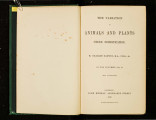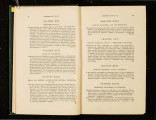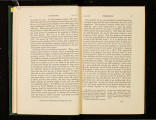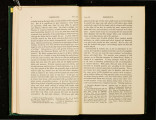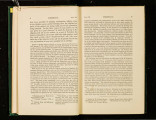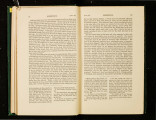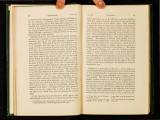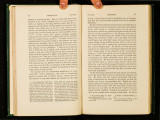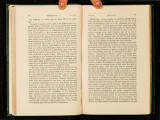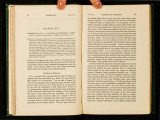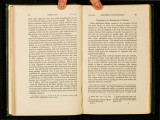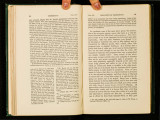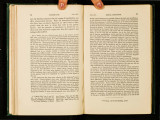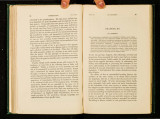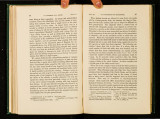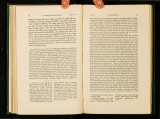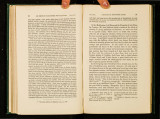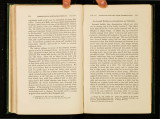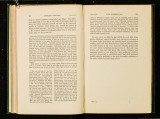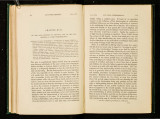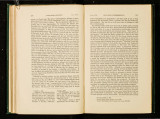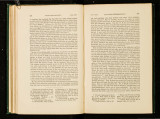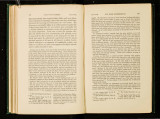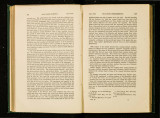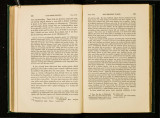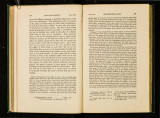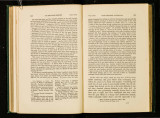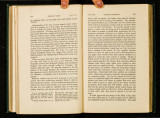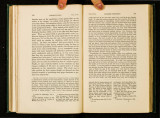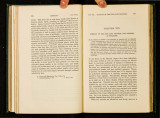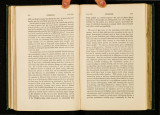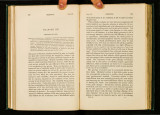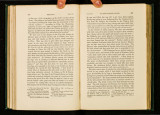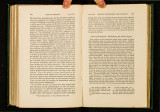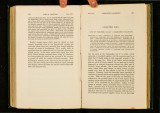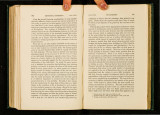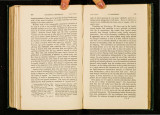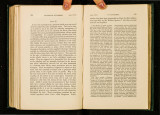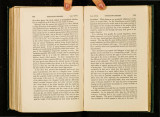| OCR Text |
Show 292 DEFINITE ACTION OF CONDITIONS OF LIFE. CHAP. XXIlf. cases the conditions of life play a subordinate part in causing any particular modification ; like that which a spark plays, when a mass of combustibles bursts into flame-the nature of the flame depending on the combustiLle matter, and not on the spark. No doubt each slight variation mnst have its efficient cause; but it is as hopeless an attempt to discover the cause of each as to say why a chill or a poison affects one man differently from another. Even with modifications resulting from the definite action of the conditions of life, when all or nearly all the individuals, which have been similarly exposed, are similarly affected, we can rarely see the precise relation between cause and effect. In the next chapter it will be shown that the increased use or disuse of various organs, produces an inherited effect. It will further be seen that certain variations are bound together by correlation and other laws. Beyond this we cannot at present explain either the causes or manner of action of Variation. Finally, as indefinite and almost illjmitable variability is the usual result of domestication and cultivation, with the same part or organ varying in different individuals in different or even in directly opposite ways; and as the same variation, if strongly pronounced, usually recurs only after long intervals of time, any particular variation would generally be lost by crossing, reversion, and the accidental destruction of the varying individuals, unless carefully preserved by man. Hence, although it must be admitted that new conditions of life do sometimes definitely affect organic beings, it may be doubted whether well-marked races have often been produced by the direct action of changed conditions without the aid of selection either by man or nature. CHAP. XXlV. LAWS OF VAlUATION: NISUS FOR~IATIVUS. 293 CHAPTER XXIV. LAWS OF VARIA 'l'ION - USE AND DISUSE, ETC. NISUS FORMATIVUS, OR THE CO-ORDINATL.'IG POWER OF 'l'HE ORGANISATION- O:S THE EFFEC'l'S OF THE L.'!CREASED USE AND DISUSE OF ORGANS - CHANGED HABITS OF LIFE- ACCLD\1ATISATION WITH ANIMALS AND PLANTS- VARIOUS 1\IETIIODS BY WHICH THIS CAN BE EFFECTED- ARRESTS OF DEVELOPMENT- RUDD\IE:STARY ORGANS. IN this and the two following chapters I shall discuss, as well as the difficulty of the subject permits, the several laws which govern Variability. These may be grouped under the effects of use and disuse, including changed habits and acclimatisationarrests of development-correlated variation-the cohesion of homologous parts-the variability of multiple parts-compensation of growth-the position of buds with respect to the axis of the plant-and lastly, analogous variation. These several subjects so graduate into each other that their distinction is often arbitrary. It may be convenient first briefly to discuss that co-ordinating and reparative power which is common, in a higher or lower degree, to all organic beings, and which was formerly desjgnated by physiologists as the nisus formativus. Blumenbach and others1 have insisted that the principle which permits a Hydra, when cut into fmgments, to develop itself into two or more perfect animals, is the same with that which causes a wound in the higher animals to heal by a cicatrice. Such cases as that of the Hy<ha are evidently analogous with the spontaneous division or fissiparous generation of the lowest animals, and likewise with the budding of plants. Between these extreme cases and that of a mere cicatrice we have every gradation. Spallanzani,2 by cutting off the legs and tail of a Salamander, got in the course of three months six crops of these members ; so that 687 perfect bones were reproduced by one animal duriJ+g one season. At whatever 1 'An Essay on Generation,' Eng. translat., p. 18; Paget, ' Lectures on Surgical P athology,' 1853, vol. i. p. 209. 2 ' An Essay on Animal Reproduction,' Eng. translat., 1769, p. 79. |





